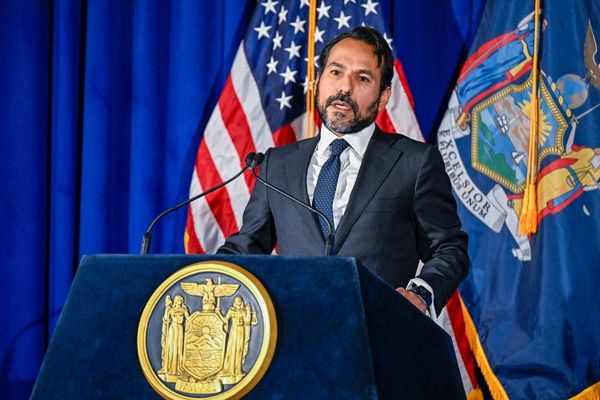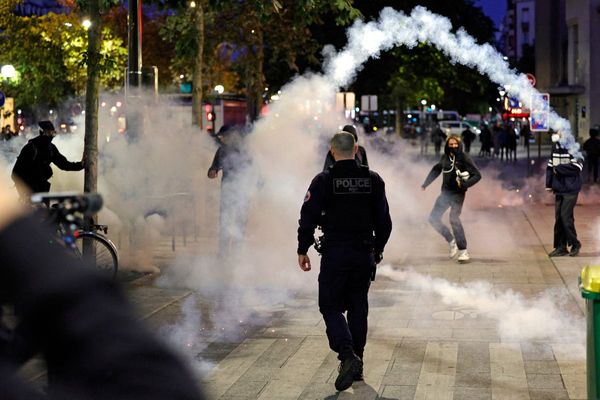
Tucked in the southern tip of the posh NDMC area, Pillanji Village is visibly scarred by rapid urbanisation. Haphazardly built houses seem to have come up without much planning. In the middle of a lone lane, a sewage line is in the process of being installed. Cars can’t enter. The occasional two-wheelers somehow manage to get in through a tough pathway.
This too is part of the ambitious Smart City project being undertaken in Central Delhi which houses the elegant Lutyens’ Bungalow Zone. Born and brought up in Pillanji Village, Nitin Kumar, a yoga trainer, said he has heard of the smart city initiative, but was mostly confused whether the new streetlights and sewer lines being laid were because of smart city or because MP Meenakshi Lekhi adopted the village.
In the same village, 60-year old Jaspal Yadav, who runs a grocery shop, hopes for better healthcare services in the New Delhi Municipal Council’s (NDMC) smart city plan. “Not that services are bad but we are told that in a few years from now our area will be like a foreign country,” he said.
The NDMC is one of the first 20 cities, which were selected under Smart Cities Mission of the Ministry of Urban Development in January 2016. Since then, the civic body claims it has completed a sizeable chunk of urban reforms including sanitation, good governance and financial sustainability.
Nearly one-and-a-half year later, Hindustan Times takes stock of the key projects under the NDMC’s smart city mission and the way ahead.
Ease of services
According to NDMC chairperson Naresh Kumar, the idea behind Delhi’s smart city project is to ensure quality services “just by tapping on the phone”. The agency promises that its USP would be “governance through technology”. Its main thrust is the 311 mobile applications which will digitize every service such as household complaints, birth and death certificates, payment of water, power and property tax and so on.
The app is already out and fully functional. Additional features such as bus schedules and others have to be included by December.
“Our 311 app is going to be the best so far and other civic agencies seem to be following suit. The app is a two-way platform where not only citizens but also our officials use it for real-time monitoring. From waste management to plumbing chores, it is going to provide almost every service,” Kumar said.
While the deadline for completing the Smart City project is 2020, the NDMC chairman said the agency would finish it by 2019.

Mobility
By the end of 2017, driving along some central Delhi roads is going to be different experience as the smart poles to be erected there are going to have sensor-based lighting.
“Mother Teresa Crescent and Minto roads will be the first to get this. Under smart roads, a new sensor-based street lighting system will be introduced on 13 roads totalling 31 kms. Lights would automatically be dimmed for saving energy during non-peak traffic hours. Out of these seven roads lead to Connaught Place,” an official said. This work is likely to be finished by January 2018.
Special features including landscaping, vertical gardens, cycle tracks, street furnitures, plazas or eateries, pelican crossing and 3D zebra crossings will be added alongside the roads, which will be disabled friendly and even have sensor-based smart parking systems. The 311 app will also let you book a parking space anywhere in the NDMC area and pay through e-wallet or netbanking. The project is, however, running way behind schedule. It was supposed to be out by November, 2016, but hasn’t taken off yet.
The tendering process has begun for 55 smart poles, which will have facilities such as WiFi, CCTV camera, environment sensors and LED lighting. Apart from this, tenders for electric vehicles and public bicycle sharing system have also been floated.
Public amenities
Ravi Tyagi has been working at public toilets across the city for nearly seven years now. But it is only recently that he started looking forward to going to work every day.
“I have been deputed in this smart toilet for two months now and I have never felt more dignified doing my job ever before. Because the facility is so clean and also offers other services like ATMs and digital health clinics, people use it responsibly and do not look down upon me,” Tyagi said.

The NDMC says 40 such smart public toilets, with features like rooftop solar panel, sanitary pad vending machine and online user feedback tablet, are already functional. The target is to build 109 units, besides water ATMs are also being installed at different locations.
If the civic agency is to be believed then the 550 acre New Delhi City Centre planned around CP will be no less than a Times Square with giant digital screens, solar trees and so on.
Point-of-delivery kiosks will also be installed at all stretches through which people can avail civic services at doorsteps. These kiosks will also have video conferencing facility so that people can directly speak to NDMC officials and inform them about the issues in their respective area.
Health and education
Taking an appointment for vaccination or from a doctor too could be done via this app. To improve health services, self registration kiosks for patients and e-healthcare modules have been implemented in all NDMC hospitals and clinics.
While 444 smart classrooms and 10 Digital Libraries have already been developed, the NDMC chairperson said the impact has already begun to show. “After the introduction of smart classrooms, 46% of the students studying in Class 10 and 12 in NDMC schools have got a CGPA ranging from 7 to 9.”
In 2015-16, only 33.1% achieved that score, while in 2014-15, 20.9% achieved it.
Energy and water
If all goes as per the plan, residents living in the New Delhi area too will be able to monitor and manage their electricity consumption on real-time basis with installation of the smart grid network. Out of its target of generating 40 MW through solar power, the agency has so far been able to install only 3.9 MW.

“A unified command and control centre is being developed for real-time monitoring of every civic issue from potholes to leakages in water or power lines. In water, 30 decentralised mini sewage treatment plants have been built out of the target of 98,” the official said.
Administration
The smart mission is also making the council employees smarter with global exposure. Hiralal, a gardener with the NDMC since 1988, was recently part of a team sent to Belgium to study best practices and come back and replicate them.
“We were there for one week but it was an experience I will never forget. Things we do by hand, they use machinery and that saves so much time. Even lifting of a heavy pot is done so easily. We will now try and do it here,” he said.
Challenges
Experts, however, say the project involves developing an already developed portion of the city and won’t be a challenge.
According to Dunu Roy, activist and director of city-based NGO Hazards Centre, infrastructure, in many aspects, is already in place in the NDMC area, which is one-tenth of the city in terms of area and one-twentieth population wise.
“In terms of smartness, to tie it up to IT network won’t be much of a problem. However, since it is an exclusive zone, the rest of the city will be excluded. More water, power and resources from the rest of the city will have to be diverted. That is going to create a problem. For one island of prosperity, the rest might have to suffer,” Roy said.
According to him, this will be done instead of focusing on providing infrastructure to the growing periphery.
“It is a social conflict and it will be a huge challenge for the state,” Roy said.
But why aren’t the other areas of the city part of this development initiative? North Delhi Municipal Corporation commissioner PK Gupta said a lot of factors were required for a civic body to qualify for the smart city mission.
“One pocket of the city getting developed won’t help the others. Each corporation had to submit a plan. Even South MCD applied but wasn’t selected. For developing a smart city, a holistic approach with existing infrastructure is required. That is difficult for the rest of the city,” Gupta said.
As far as the NDMC is concerned, even as the target looks achievable, there are factors slowing down the progress. Officials expressed concerns over numerous bureaucratic hurdles which delay projects.
“People think that NDMC doesn’t have to face multiplicity of authority, but that’s not the case. For every project in the Lutyens’ Zone, we need to get clearance from multiple agencies such as the Delhi Urban Arts Commission, heritage committee, Archaeological Survey of India, DGCA and fire,” said an official on condition of anonymity.
One prime example is the plan to pedestrianise CP which despite having all other approvals never took off because the traffic police was not on board, sources said.
One key feature of Smart City is to have an intelligent traffic management system. However, it is beyond the NDMC’s purview and a similar plan is lying with the Delhi traffic police.
What next?
In a recent meeting, the Centre has told NDMC that it wants to showcase New Delhi as the first smart city and ensure completion ahead of 2020.
In the next three years, living or working in New Delhi area might be a whole new experience. You will be able to just take out your phone and search for a public toilet, have clean drinking water and even vending machines for snacks and sanitary napkins! Find a parking slot on your smartphone or videoconference with a civic body official regarding broken road or non-functional streetlight.








